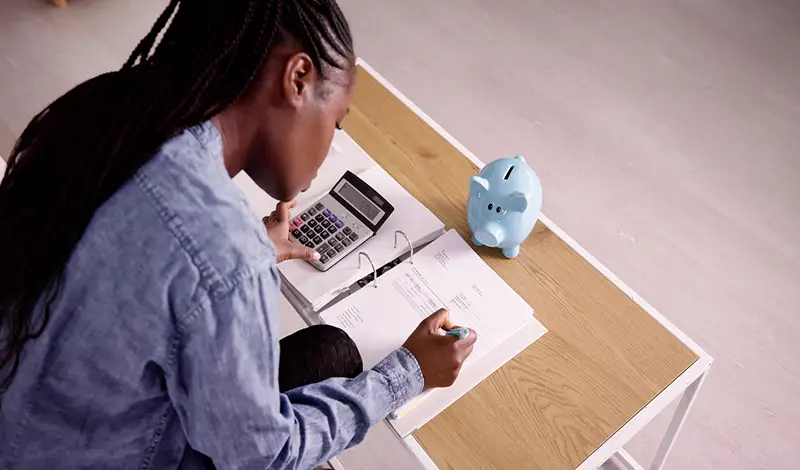How to Build an Emergency Fund for a New Home
Published on February 10, 2024 | 5 Minute read

Melanie
Ortiz Reyes
Content Specialist
Embarking on the journey of building a new home is an exciting and rewarding experience. However, amidst the thrill of choosing floor plans and interior designs, it's crucial not to overlook the importance of financial preparedness. Establishing an emergency fund is a fundamental step in securing your financial stability during the home-building process.

Understanding the Need for an Emergency Fund
Building a new home involves a multitude of unpredictable factors that can strain your finances. Unexpected expenses, construction delays, or unforeseen emergencies can arise, and having a financial safety net in place ensures that you can weather these challenges without derailing your home-building dreams.
1. The Unpredictability of Construction Costs
Construction costs can be notoriously unpredictable. Material prices fluctuate, labor costs may vary, and unforeseen issues during the building process can lead to additional expenses. An emergency fund provides a buffer, allowing you to navigate these uncertainties without compromising the quality of your new home.
2. Cushioning Against Delays
Construction timelines are often subject to delays due to weather, permitting issues, or unexpected challenges on the building site. These delays can have a domino effect on your budget, making an emergency fund essential for covering temporary accommodation, storage, or other unplanned expenses that may arise during extended construction periods.
3. Preparing for the Unexpected
Life is unpredictable, and emergencies can happen at any time. Whether it's a medical expense, car repair, or any other unforeseen event, having an emergency fund ensures that you won't need to dip into your construction budget to address immediate financial needs.

Building Your Emergency Fund: Step by Step
1. Set Clear Financial Goals
Before you start building your emergency fund, it's essential to define your financial goals. Calculate the total cost of your new home project, including land, construction, permits, and other associated expenses. Determine a realistic emergency fund target based on a percentage of the overall project cost.
2. Establish a Budget
Creating a detailed budget is the cornerstone of financial planning. Identify your monthly income, fixed expenses, and discretionary spending. Allocate a specific portion of your income towards your emergency fund. Treat this contribution as a non-negotiable expense to ensure consistency in building your financial safety net.
3. Automate Savings
Set up an automatic transfer to your emergency fund each month. Automation removes the temptation to spend the money elsewhere and ensures a consistent and disciplined approach to building your financial cushion. Treat your emergency fund as a priority, just like you would with other essential bills.
4. Start Small, Grow Gradually
If you find it challenging to allocate a significant portion of your income to your emergency fund initially, start small. Begin with a manageable amount and gradually increase it as your financial situation allows. The key is to develop the habit of consistent saving.
5. Cut Unnecessary Expenses
Review your spending habits and identify areas where you can cut back. Eliminating unnecessary expenses frees up more money to contribute to your emergency fund. Consider reassessing subscription services, dining out less frequently, or finding more cost-effective alternatives for daily expenses.
6. Utilize Windfalls
Windfalls, such as tax refunds, work bonuses, or unexpected gifts, provide an excellent opportunity to boost your emergency fund. Instead of splurging on non-essential items, consider allocating a portion or the entirety of windfall gains towards your financial safety net.
7. Explore Additional Income Streams
Increasing your income, even through small side hustles or part-time work, can significantly accelerate your ability to build an emergency fund. Explore opportunities that align with your skills and schedule to supplement your primary source of income.

Strategies for Maintaining and Growing Your Emergency Fund
1. Regularly Reassess Your Budget
As your financial situation evolves, it's essential to reassess your budget periodically. Adjust your emergency fund contributions based on changes in income, expenses, or other financial priorities.
2. Avoid Temptation
The purpose of an emergency fund is to provide a financial safety net for unforeseen circumstances. Avoid the temptation to dip into this fund for non-emergencies or discretionary spending. A disciplined approach will ensure that your emergency fund is ready when needed most.
3. Celebrate Milestones
Building an emergency fund is a significant achievement. Celebrate milestones along the way to stay motivated. Setting achievable goals and acknowledging your progress reinforces positive financial habits.
4. Explore High-Interest Savings Accounts
Consider keeping your emergency fund in a high-interest savings account to maximize its growth. While interest rates may not be exceptionally high, every bit helps, and the goal is to outpace inflation and preserve the fund's purchasing power.
5. Review and Update Insurance Coverage
Adequate insurance coverage is a crucial component of financial preparedness. Regularly review your home insurance, health insurance, and any other relevant policies to ensure that they align with your current needs and circumstances.
Establishing and maintaining an emergency fund is an essential aspect of responsible financial planning, particularly when building a new home. By understanding the unpredictable nature of construction costs, preparing for potential delays, and anticipating unexpected life events, you can create a robust financial safety net that safeguards your home-building dreams. Follow the step-by-step guide outlined above, and remember that the key to successful financial management is consistency, discipline, and adaptability. As you embark on the exciting journey of building your new home, let your emergency fund be the cornerstone of financial resilience, providing peace of mind and stability throughout the construction process and beyond.